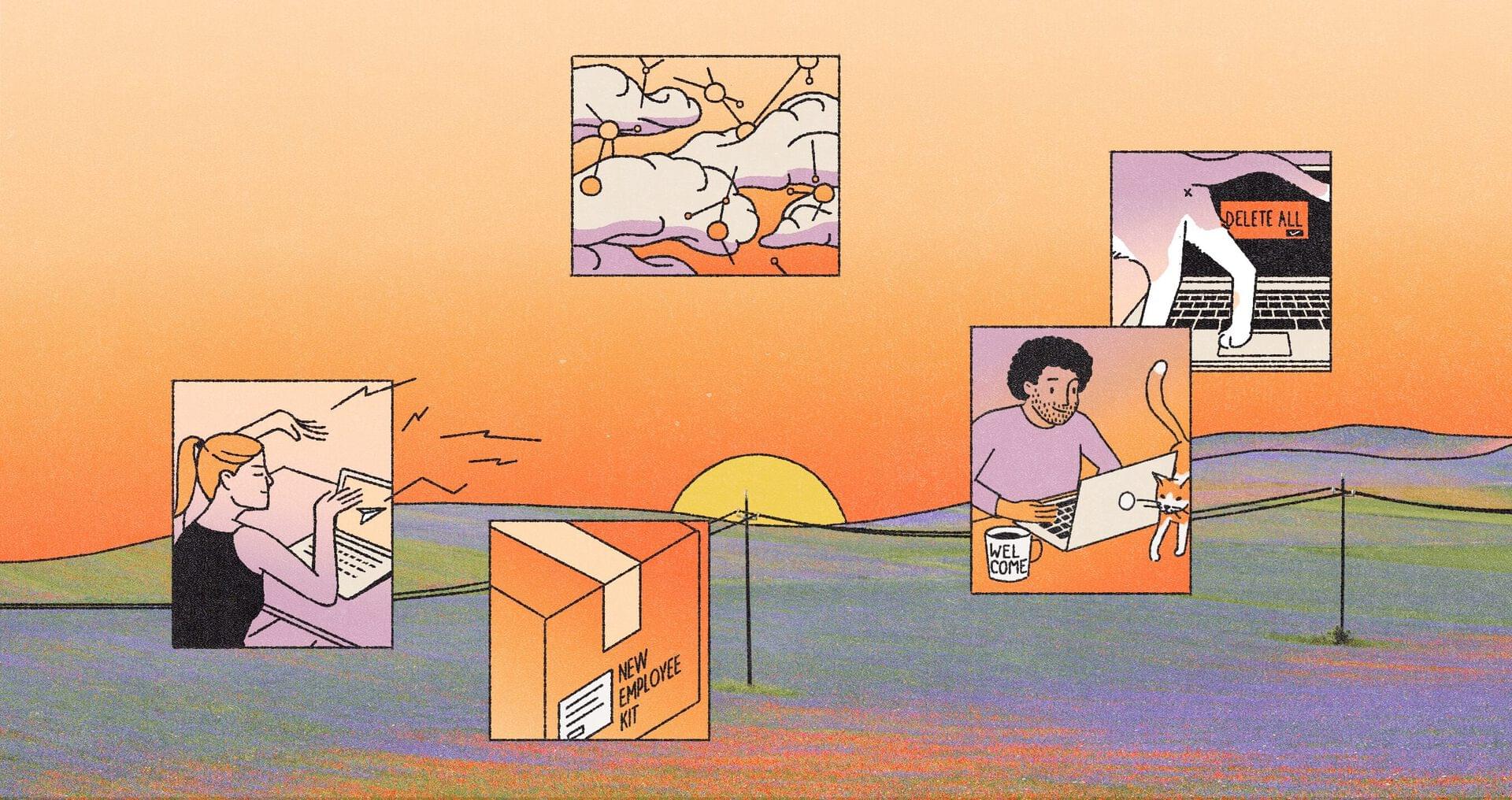Article • 4 min read
Top priorities for IT in the new normal
The intersection of work and technology has permanently changed. Many employees have become comfortable working remotely, productivity continues to be high and the notion of traditional office space is disappearing. A recent Gartner survey indicated that 41% of employees are likely to continue working remotely more often once things return to "normal". However, we don't yet fully understand what normal will mean in the long term. So, how do you manage something that is clearly not going back to the way it was?
By Dan Ortega , Vice President, Product Marketing, Oomnitza
Last updated March 16, 2022
There are significant long-term implications for how IT is managed and supported. Providing a fully integrated view across endpoints, cloud, networking and applications in a hybrid deployment model has become critical for the service desk and the companies they support.
While there are myriad variables that need to be addressed, for the sake of brevity we are going to focus on three that are likely to be critical in moving the needle for enterprises adopting a hybrid model.
Logistics orchestration: keep track of the assets
Now more than ever it is critical to keep track of all assets (hardware, software, accessories, etc.) associated with all users, across the entire asset lifecycle. Several broad and complex events are happening at once; companies are expanding their hiring with less emphasis on geographic proximity, fewer companies are returning to pre-pandemic work on site models, and employees are not only remote, they’re starting to move around because they can. And undergirding all this is the continued shift to the cloud, a rapid rise in network entities (IoT) and an acceleration of cyber attacks (see below).
Many security breaches can manifest as a user experience — something not working the way it’s expected to.
Coordination of IT logistics in this model has become enormously complex; the service desk must not only know who has what with precision, but where that asset is has become a constantly changing variable. Having a clear understanding of asset status as it moves through its lifecycle not only has financial implications, but it also triggers regulatory and HR workflows that will reach across multiple functional silos.
Security enforcement: minimise the risks of WFA/work from anywhere
Given the expanded potential attack surface associated with a work from anywhere (WFA) model, enterprises need to lean in even further to track AV, licence and location status on all relevant assets to minimise risks associated with hybrid work models. When there is any issue, the first point of contact is the service desk, and many security breaches can manifest as a user experience — something not working the way it’s expected to. It is critical to have a complete and holistic view of the user’s environment. (hardware, software, cloud instances, etc.) that are part of a schema used by the service desk to resolve IT support issues. Having this type of perspective not only unites previously disparate systems around the variable that matters most (the user), it can also show interdependencies that may put the company at risk.
User experience: make onboarding and offboarding a well-oiled machine
It is critical to employee and customer productivity to deliver a smooth onboarding experience, ensuring the right assets are delivered to the right person at the right time, which can present particular challenges in a “work from anywhere” scenario. For many employees, a big part of the onboarding process is the experience they have getting set up and up to speed. Everyone wants to hit the ground running fast when starting a new job, and nothing is more frustrating than losing time waiting for a laptop, or having a laptop without the proper configuration. This can set the tone for everything else that follows, and can be the difference between a happy, motivated employee and a cynical, frustrated one.
The onboarding process can be the difference between a happy, motivated employee and a cynical, frustrated one.
The same process applies when employees are being offboarded. With so many applications in the cloud, if you remove an employee’s credentials from the system, you run a very real risk of deleting all the files they were working on. This has security and compliance implications; being able to track devices and the software they use is critical to ensuring a smooth transition for both the company and the employee. As has happened many times, a disgruntled employee who becomes a former disgruntled employee can be very risky. Do not become another cautionary tale.
Data in motion is data at risk
There is much more movement in the IT ecosystem now than ever before
More devices with sensitive information are out in the wild
Nefarious actors are grabbing opportunities with increasing focus
All of this is happening against a background of continued migration to the cloud, digital transformation to a WFA (hybrid) environment and an explosion of undersecured devices. When things go south, the first door that gets knocked on is the helpdesk, so having a fully integrated perspective across all your IT assets is integral to the success of any enterprise’s service desk.
Zendesk and Oomnitza work together to enable powerful asset management. Using Oomnitza and Zendesk together, you can easily track and manage all your assets — and securely interact with every Thing that powers your business, wherever you are. Learn more.
